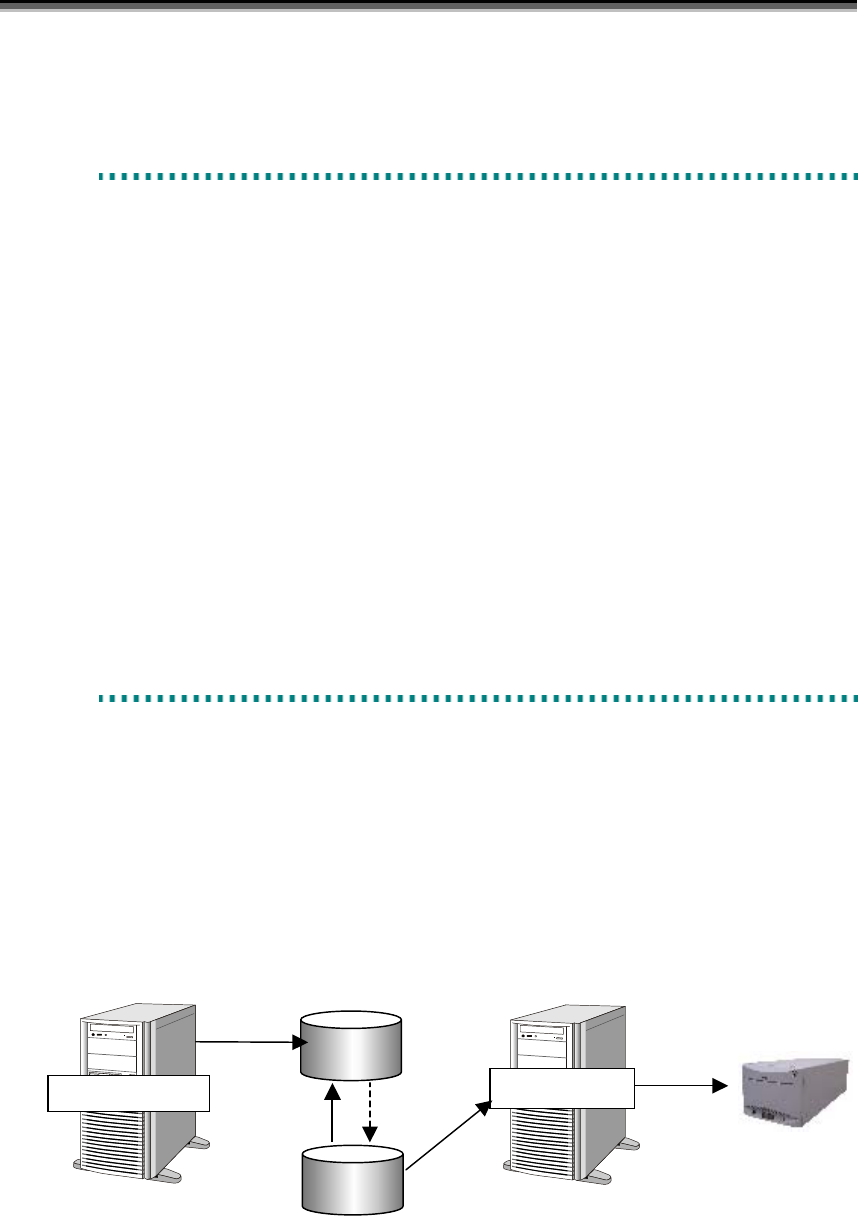
Chapter 1 Data Replication Overview
2
1
1
1
.
.
.
2
2
2
E
E
E
x
x
x
a
a
a
m
m
m
p
p
p
l
l
l
e
e
e
s
s
s
o
o
o
f
f
f
A
A
A
p
p
p
p
p
p
l
l
l
y
y
y
i
i
i
n
n
n
g
g
g
D
D
D
a
a
a
t
t
t
a
a
a
R
R
R
e
e
e
p
p
p
l
l
l
i
i
i
c
c
c
a
a
a
t
t
t
i
i
i
o
o
o
n
n
n
When you introduce Data Replication and use replication volumes which can be separated, you can get
the following benefits.
• The system down time during data backup is largely reduced. Lowered access performance to the
business database during data backup in system operation can be prevented.
• A test environment using the actual business data can be built more easily.
• Processing becomes more efficient due to parallel processing of data update tasks and data reference
tasks.
In this way, Data Replication makes system construction and system management easier and more
effective.
The following sections illustrate some applications of Data Replication.
1
1
1
.
.
.
2
2
2
.
.
.
1
1
1
B
B
B
a
a
a
c
c
c
k
k
k
u
u
u
p
p
p
This section describes an application for backup using replication volumes.
[Backing Up from the Replication Volume to Magnetic Tape Media]
In this method, a replication volume of the master volume is backed up to the magnetic tape.
In this case, operations are suspended only for the time it takes to separate replication volumes from the
master volume. Therefore, the suspension time can be substantially reduced.
Because backup is done from the replication volume, it does not affect the master volume.
Figure 1-2 Backup from Replication Volume
Master Serve
r
Backup Serve
r
Maste
r
(MV)
Replication
(RV)
Production Task
Connect
Backup
Separate
Tape


















